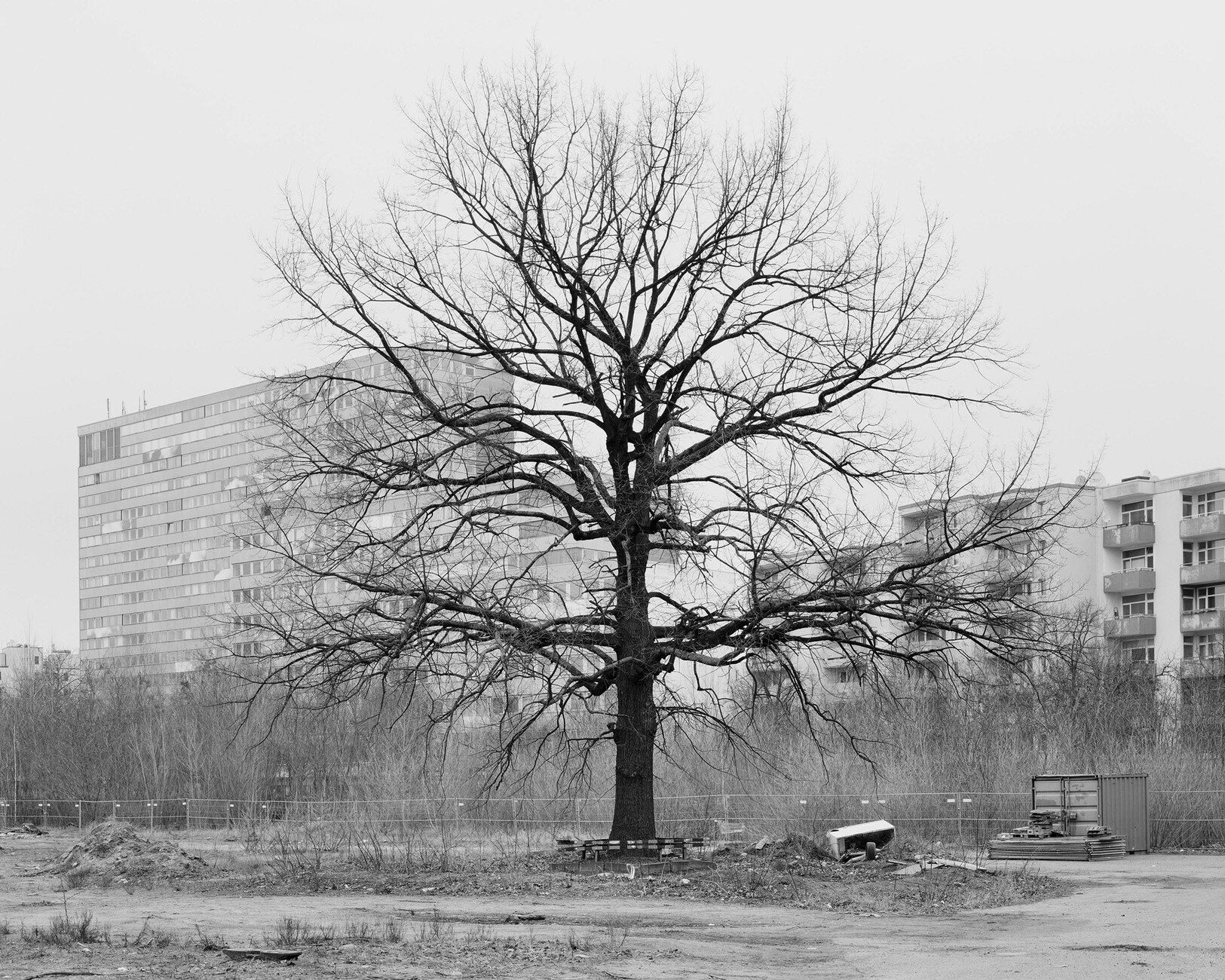The fascination of opposites
This publication is not a coffee table book. Even though thanks to its elaborate presentation and impressive format “Berlin” by Andreas Gehrke would naturally look excellent on a mid-century coffee table. However, Gehrke’s photographs of his home town are not the kind of light entertainment typically called for in this genre. Rather the 102 images exude a subtle melancholy. They show the city’s less highlighted sides, abandoned spaces in diffuse light, empty sites, in-between places, functional architecture, in short its worn, everyday face. And should a well-known sight be featured, such as the TV Tower, Checkpoint Charlie, the Pergamonmuseum or the building site of Berlin Palace, then they appear remote and not like the sights highly coveted by the tourists until the pandemic struck. If for no other reason all life seems to have seeped out of Gehrke’s Berlin. There are no cars on the roads and people likewise only seldom put in an appearance. Someone out delivering pizzas. A few tiny figures on a snow-covered Tempelhofer Feld, that is as far as it goes.
Andreas Gehrke took six years in total to explore Berlin; from 2014 onwards the photographer toured the city with his camera. Then for the book he selected very different subjects in both color and in black and white: Close-ups of architectural details alternate with shots of buildings and entire street sections. Bare trees; he likes making use of them to hide houses from view. Those familiar with the city will recognize some themes immediately, others seem familiar though you are unable to actually quite place them, like the bombed-out street corners so typical for Berlin that after the war were filled with makeshift buildings. An address index in the appendix helps you pin them down. The “Berlin” book can also be seen as a counterpart to Gehrke’s book “Brandenburg” published in 2017. City and rural areas, architecture and landscape: In both books the seemingly clear divides become blurred. Gehrke, also known as Noshe, published this one himself in his company founded in 2013, Drittel Books. A platform for his own book projects and those of artist friends, an undertaking he manages alongside his work as photographer.
Andreas Gehrke’s photographs are accompanied by an intelligent essay by Berlin architecture journalist Florian Heilmeyer. With his two-part text “Bruchlandschaft” (Broken Landscape) he not only provides an insight into how the photographer works and highlights his influences. Heilmeyer also draws a portrait of a city that has suffered badly over the years and owing to various breaks and destruction was never able to grown into a harmonious whole like other European metropolises. As Heilmeyer says “Berlin is a city full of breaks and contradictory fragments that don’t fit together.” However, it is precisely these breaks and gaps in the city’s fabric, the unrestricted clashes of opposites, that many people find so attractive about Berlin. Andreas Gehrke accepts this intrinsic aspect of the city and shows it with a calm eye and without transfiguring it. The final photo shows a building site in Prinzessinnenstrasse in Berlin’s Kreuzberg district. After all, the book is also a means a saying farewell to a disappearing city: The one or other makeshift building has long since been demolished, some facades have long since been made over, empty sites have been filled. That is enough to make anyone a little melancholy, isn’t it?
Andreas Gehrke
BERLIN
192 pages / 102 images
german/ english
Drittel Books
ISBN 978-3-9818866-3-4
55 Euro



















